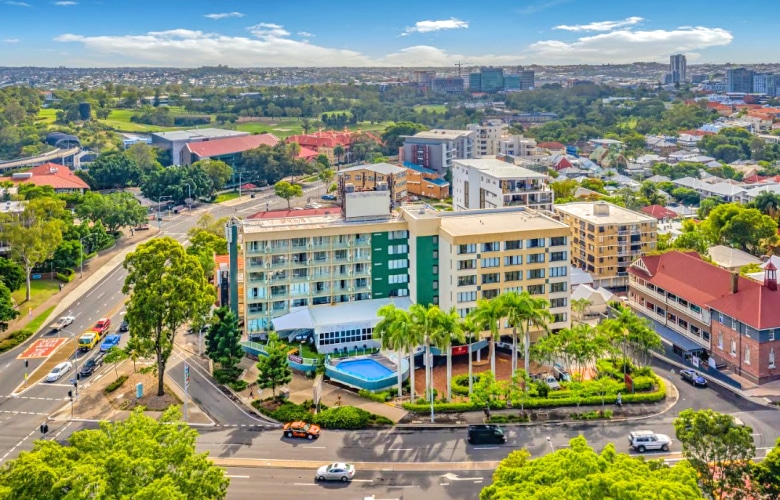The Queensland government is on the lookout to secure Brisbane-based mid-rise brownfield buildings and is looking to convert distressed assets into social housing to meet the surging demand for housing.
Last week, the Queensland Government acquired the 84-room Park Hotel in Spring Hill and plans to retrofit the hotel and communal rooms to provide homeless accommodation.
The property is the state’s latest acquisition; it follows the purchase of a motor inn in Hamilton and retirement villages in Clayfield (also in Brisbane), Rothwell, Toowoomba and the Redlands.
According to Queensland Housing Minister Meaghan Scanlon, the investment in brownfield construction plays a vital role as the state grapples with a “population boom.”
“While we have a strong focus on building new properties, we are also supplementing construction with strategic purchases, like this hotel in Spring Hill,” the Minister said last week.
The Wood Central Publisher spoke to a director of one of Australia’s largest social housing not-for-profit organisations, who commended the Government on “innovative investment in brownfield assets” to meet future demand.
The director, who anonymously spoke to Wood Central, said, “The key is to ensure that the right assets are selected – and that they do not have nasty surprises in the building core.”
In addition, “the acquisition provides an ideal opportunity to use low-carbon materials in the refurbishment to drive decarbonisation across Australia’s most at-risk assets.”
According to the Australian Insitute of Architects, embodied carbon (emissions from building construction) and operational carbon must be considered in a building’s lifecycle.
Often, the older buildings, which could be subject to retrofitting, are the assets with poor embodied and operational carbon.
“This is the opportunity, and why the Queensland State Government should consider low carbon materials like timber in construction, but also design methodologies like “design for deconstruction” and “design for disassembly” as part of the construction process.”

Last month, Wood Central reported that thousands of Australian buildings must decarbonise to meet net-zero targets.
The report, ‘Every Building Counts,’ was published by the Property Council and the Green Building Council of Australia and claims that existing buildings contribute 66% of our current carbon emissions.
According to Davina Rooney, CEO of the Green Building Council of Australia, the report will help governments define clear, long-term strategies to deliver zero carbon-ready and resilient buildings.
According to Simon Dorries, CEO of Responsible Wood and Chair of the TM11 – which manages the Australian Standard for Engineered Wood Products, the push to target upfront carbon emissions provides a significant opportunity for the Australian timber industry.
“That’s a lot of demand for structural timber (in greenfield construction) and also appearance grade timbers (in retrofitted brownfield construction),” Mr Dorries said.
Daniel Wright, Australian Sustainable Hardwood’s Business Director, one of Australia’s largest timber manufacturers, told Wood Central that “timber is ideally suited to drive reductions in embodied carbon across new structural projects but also in refurbishments and fit-outs.”
Queensland’s push to meet housing demand comes after the release of the draft ShapingSEQ Regional Plan, which reports that the State Government plans to build 900,000 new homes by 2046, accommodating 2.2 million additional residents.
According to Deputy Premier Stephen Miles, “Southeast Queensland is booming,” with six million people expected to call this region home by 2046.
At the time, Housing Minister Meagan Scanlan emphasised the importance of lifting social and affordable housing capacity to meet the challenging population targets.
“We know that residents in Queensland, like elsewhere in the nation, are facing increased housing pressures that are impacting affordability,” Minister Scanlan said.
“With these new targets and requirements for social and affordable housing, government and industry will be clear on what is needed to help deliver for our future population.”
However, population pressures are putting strain on Australia’s capacity for structural timbers, with industry calling on the Government to boost plantation capacity to meet the needs for social housing.
In August, Timber Queensland’s CEO, Mick Stephens, told Wood Central that the Queensland-based timber industry had raised concerns over the proposed resumption of plantation land for housing.






